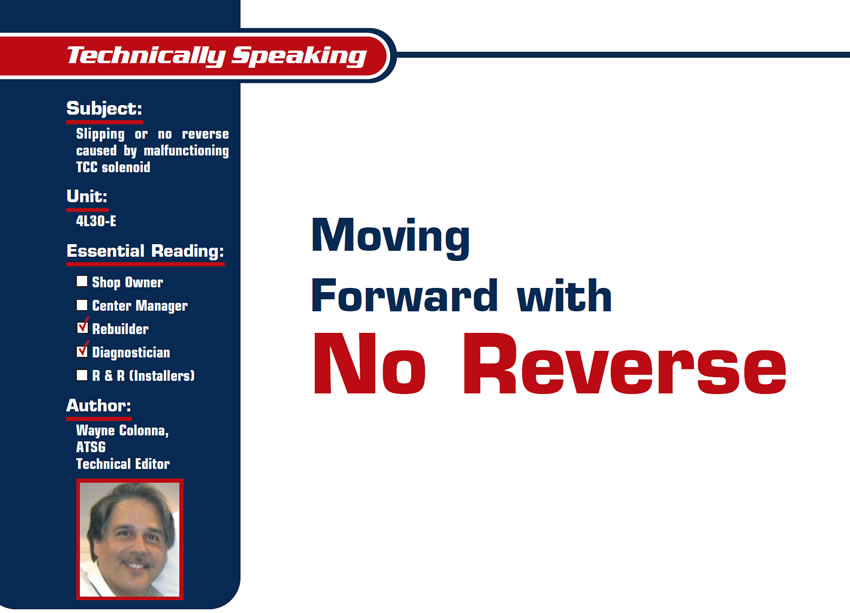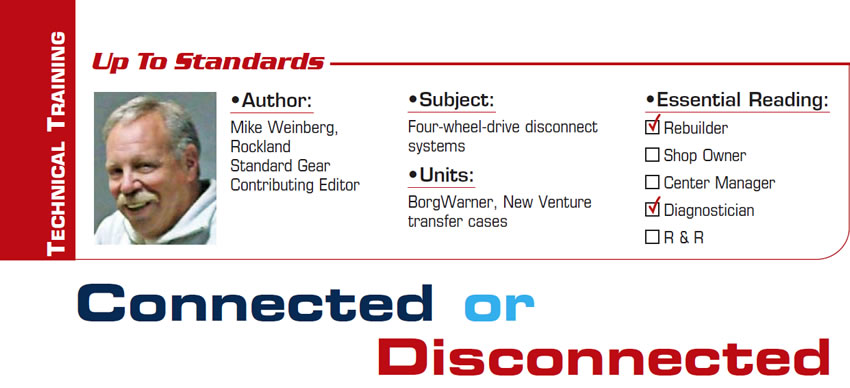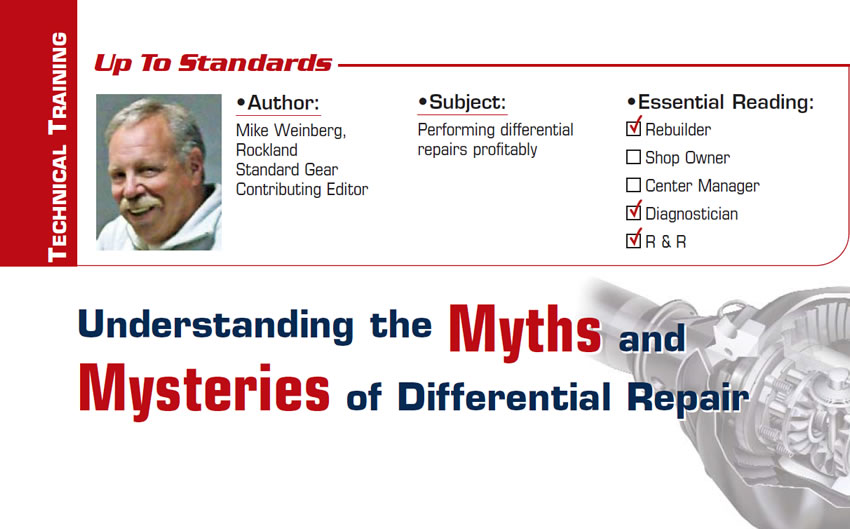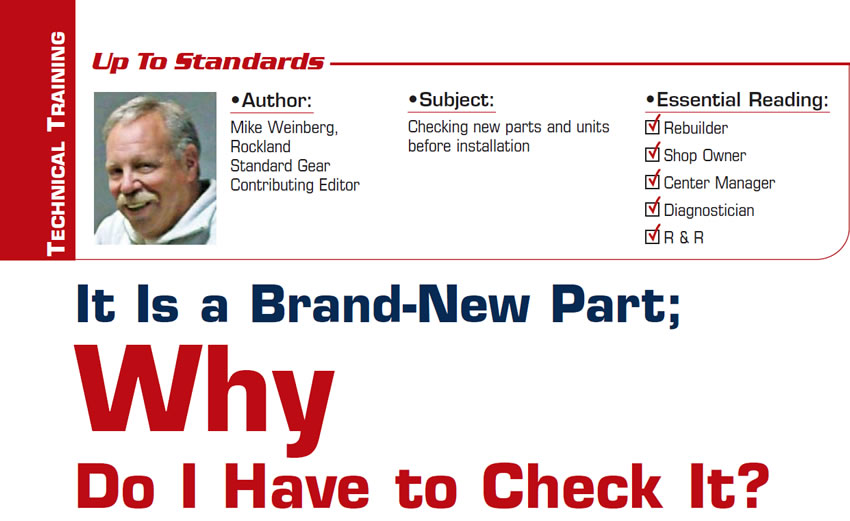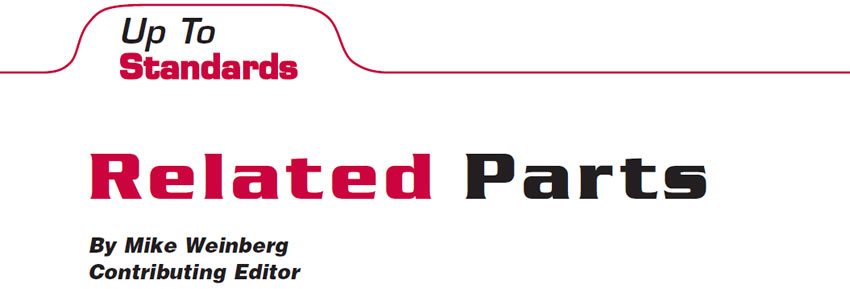
Up to Standards
- Author: Mike Weinberg, Contributing Editor
The modern automobile has become a very efficient and complicated machine, comprised of many interrelated systems that are dependent on each other. Problem-solving and locating the cause of failures have been elevated to an art form. It is no longer possible to repair vehicle components, such as transmissions, transfer cases and rear differentials, without a complete understanding of the relationship of all systems and parts that influence these units. The story of “related parts” is to enable an understanding and create a thought process for you to increase your profits while reducing your comeback rate and product liability.
When a customer engages you to repair a transmission, transfer case or differential, you are immediately concerned with the present operation or failure of that component. In short order you and your customer create an agreement in principle between you regarding the cost of that repair and your responsibility during and after the process.
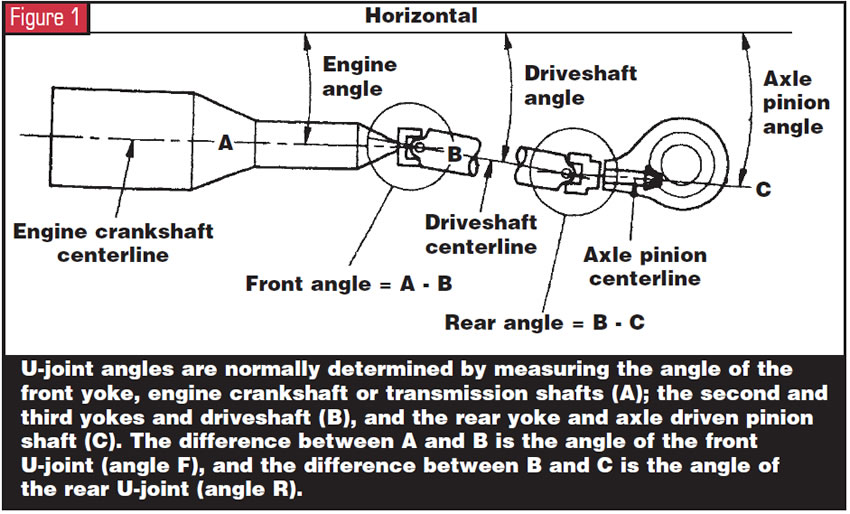
In our present society, which has been thoroughly schooled in the attorney approach to problem resolution, having a detailed warranty that meets all state and federal laws and protects both the customer and your shop is a must. In the warranty you should have a clause that covers related parts. The passage that follows has been tested in the courts successfully and is placed here as an example; any language incorporated into your warranty should be crafted by legal professionals or come from a state or national trade organization:
“This warranty is limited to replacing the transmission or parts thereof which upon our examination prove to be defective. It does not include breakage of gears, damage resulting from abuse, faulty operation of any part or parts not furnished as part of the transmission (such as linkage, clutch assemblies, shifters, motor or transmission mounts, worn or defective driveshaft components, pilot bearings or bushings, tires and wheels, or electric components etc.), accident or racing. Units will not be covered under warranty if they are run out of lubricant, underfilled or overfilled with lubricant, or filled with the incorrect lubricant.”
This is an example of the need to make sure that the customer is liable for the correct maintenance of all the items that are not under your control.
Related parts can become a problem or create a warranty issue, or they can become a profit-building center. The difference is in how you and your people are programmed when you inspect a vehicle for the first time. After a thorough road test, if possible, the next step is a thorough physical and diagnostic inspection of the vehicle.
The easiest way to establish a thorough routine is by creating a physical checklist that all people involved in the process must complete and sign. List every conceivable piece of information that you need to know about this vehicle. Battery voltage, engine vacuum, tire size (measured), tire pressures, fluid condition and every physical aspect of the driveline, brakes, steering, shocks, springs, struts etc. must be listed and accounted for.
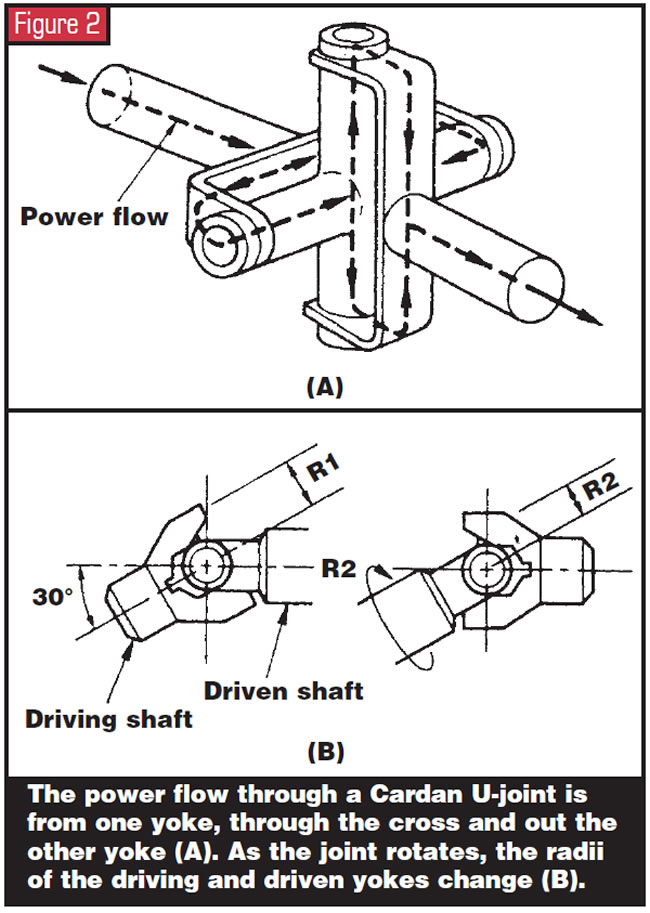
Now that you have a paper trail and you know what needs to be replaced, you are in a position to sell some work to your customer. This is all value added for you and the customer. You now should have a real handle on what you are getting into and an opportunity to sell any additional work needed and protect your warranty. The customer benefits from becoming aware of the problems in the vehicle that exceed his original issue. Even if the customer cannot afford to make extra repairs at this point, you can schedule secondary repairs for later and qualify their effect on the warranty issues.
Between handling our tech line and the 2% of our production that is comeback related, it is easy to see where a careless approach to vehicle inspection becomes quite costly. Driveshafts are a huge cause of unit failures and apparently are overlooked by shops rushing to sell and complete work.
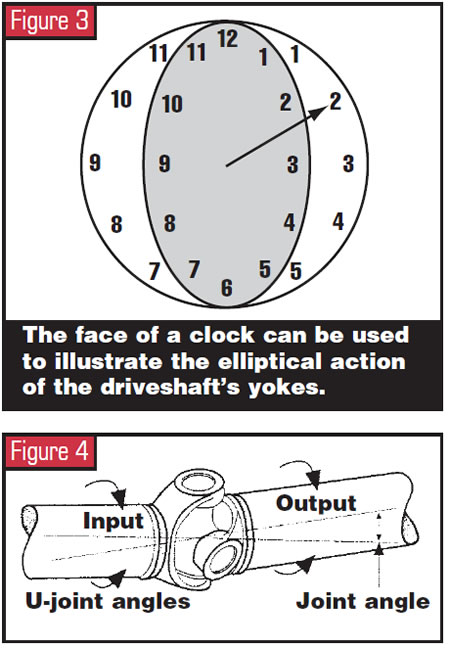
At least once a month we see a ZF five-speed transmission from a Ford truck that has the rear case half demolished. This is always caused by a failed transmission mount or a bad driveshaft. The same with an NV241 transfer case in the Dodge truck line: If the extension housing or rear case half is destroyed on the transfer case, it will be caused by the driveshaft. Perhaps the problem occurred after repairs were made and well into the warranty period, but if you have one of these vehicles with this type of problem on the initial inspection, sell the customer a driveshaft.
Perhaps we take universal joints for granted because they seem to be simple old technology, but remember that the driveshaft is spinning about three to four times as fast as the tires. The U joint on the input side is spinning at the same speed, but the output side will speed up and slow down twice per revolution because of driveline angle. The output yoke is traveling basically in an elliptical path while the input is in a circular motion. Driveline angles must be as equal as possible to cancel out the speed differences, and these angles change with suspension movement, load on the vehicle, spring and shock wear, and modifications such as lift kits.
The driveshaft also is exposed to weather and road hazards, which can change balance immediately. A third problem frequently created with driveshafts is damage to transmission or transfer-case seals due to sloppy installation. It is common for a technician to roll the inner lip on an extension-housing seal when installing the driveshaft yoke improperly. On the M5R1 series of Mazda-built transmissions in the Ford light-truck line this causes many lube-related failures, as the leak is slight and sometimes is not noticed for months.
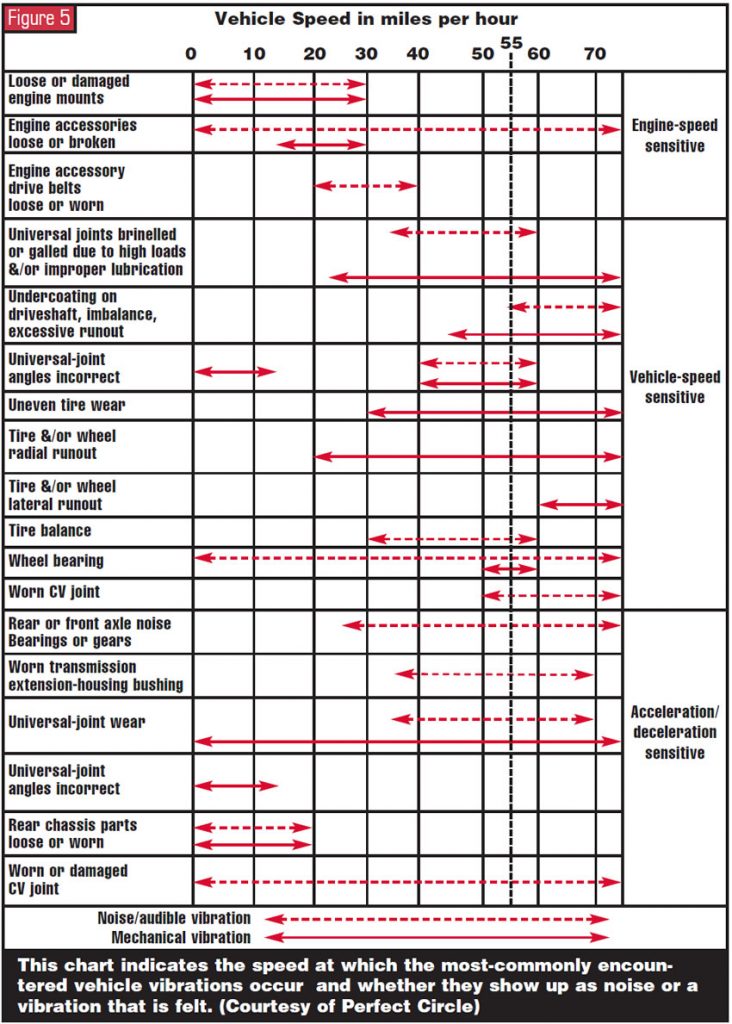
There are many instances in which driveshafts should be sent out for balancing and alignment and need a fresh set of joints. This makes you more money and prevents a nasty comeback. Look at the rear springs and make sure that the coils or leaves are in good shape. If you have a doubt, measure from the frame to the rear housing on both sides to see whether there is a difference. Remember, your customer thinks that GVW means he can put in as much concrete block as it takes to fill the bed.
Check the rear and front differentials for proper fluid level, leaks, loose pinion lock nuts and proper backlash. The most-commonly misdiagnosed noise is from a worn rear differential and “walks” through driveshafts to appear as if coming from the transmission or transfer case. I would love to have a dollar for every unit that was disassembled when the cause was in the differential.
Tires and wheels play a huge part in creating diagnostic problems for the repair shop. Ignore tire size (measured) and pressures at your peril. Mismatched tires create at least 20% of all codes and failures in late-model transfer cases. With the advances in computer integration in the vehicle there are any number of programs (ABS, stability control, traction control, automatic all-wheel drive etc.) that depend on accurate wheel-speed readings to function. You cannot have any accuracy if the tire sizes vary more than one-quarter inch or less. This tire-size difference kills transfer cases equipped with clutch packs and viscous couplings, and it damages differentials. If tire size/pressure is part of your checklist, your life will grow less complicated.
A quick check for electrical codes also is part of the road to peace. History codes can tell you of past problems, and with the complexity of the integrated electronic systems and vehicle multiplexing, you need to know before you quote. We have seen problems with Ford Explorer models equipped with the BW 4405 transfer case caused by a shorted wire in the rear-window defroster. Who would have thought that they were related, but nothing should surprise you today. On these vehicles the short harness that runs from the transfer case to under the driver seat is a common failure. The usual symptom is that the transfer case will go from 2WD to 4WDLow without being commanded by the driver. This usually breaks the transfer-case low-range fork, as this shift is intended to be made only under 3 kilometers per hour with the brake engaged and the transmission in neutral. The shorted harness will bypass all safety parameters in the design.
Related parts are a path to increased profit and better workmanship. Limit your liability to the customer, and make him responsible for the proper care and maintenance of his vehicle. Careful initial inspection and a thoroughly written checklist will add to your profits and create a professional working environment for everyone in the shop. Related parts have a huge influence on how long your work will satisfy your customer, and making your customer aware that there are no unimportant parts on the car goes a long way toward making him pro-active on maintenance.


